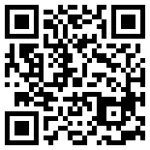Have you heard that you can read barcodes with your cell phone? There are a number of barcode related apps for the iPhone and one for Android cell phones. Most are designed as shopping tools. They use the barcode number to search a number of web sites, like Amazon and Google, to pull up product information, price comparisons, and customer reviews. Some will even utilize the GPS in your phone to locate the nearest store that has the item in stock.
However, not all of those barcode apps actually scan the barcode. Several require you to type in the ISBN or UPC number, which doesn't seem to offer much more advantage to typing those same numbers directly into Amazon or Google. Besides, the two main advantages to using barcode scanning is that it's much faster than typing and it practically eliminates data entry errors.
Now, there are barcode apps that really do read the barcode, such as
Red Laser. The phone must have a camera. You take a picture of the barcode and the software decodes the information in the barcode. For linear barcodes, like UPC, that information is the same as the number printed below it. For 2D barcodes, like the QR Code that's so popular in Japan, a lot more text can be encoded. Some users have difficulty getting a usable picture of the barcode since most camera phones aren't designed to take photos as close as you need to be to the barcode. The
Clarifi case has been recommended as a solution for clearer close-up photos.
Advertisers are starting to use 2D barcodes in magazine ads that are links to websites where you can get more information on the product or buy it. On movie posters, the 2D barcode can be a link to the trailer or show times and tickets. Here is an example of a
QR code, which is starting to appear in European publications and in Japan, is used everywhere from magazines to billboards to even gravestones:

Barcodes have become such a part of the Japanese culture now that most Japanese cell phones are sold with a barcode scanning app preloaded. How much longer before 2D barcodes proliferate throughout the American culture? First, American advertisers and cell phone manufacturers have to agree on a barcode symbology to use and a barcode scanning app to have preloaded on the phones. It wouldn't take long at all after that.
So does that mean someday soon that cell phones will replace all
wireless barcode scanners and
mobile computers? Will you be signing for your UPS package on the driver's iPhone? Will your company's warehouse workers be using G1 cell phones to stock inventory? Not likely.
Unlike cell phone cameras, the barcode scanners integrated in mobile computers are designed to read barcodes and, therefore, can read them much faster and more accurately. The average read time for a barcode app on a cell phone is 15 seconds. That is not long for the general consumer to wait for a price comparison, but that is not a reasonable wait for a warehouse worker who has a hundred more barcodes to scan. You might be able to get a read time of 1 to 2 seconds out of a barcode app, but that still can't touch a true barcode scanner that has an average scan speed of 200 scans per second. "Time is money" may be an old cliché, but it is still very true.
Mobile computers are built with rough and dirty environments in mind. They are designed to withstand multiple drops to concrete, being bounced around a delivery truck, and the dusty air of a typical warehouse, all while scanning barcodes and running their application flawlessly. Whereas cell phones are designed to be clipped securely to a belt or nestled snuggly in a purse or pocket until needed by their owners, who know they are solely responsible for the replacement cost should the phone break.
 Barcodes have become such a part of the Japanese culture now that most Japanese cell phones are sold with a barcode scanning app preloaded. How much longer before 2D barcodes proliferate throughout the American culture? First, American advertisers and cell phone manufacturers have to agree on a barcode symbology to use and a barcode scanning app to have preloaded on the phones. It wouldn't take long at all after that.
So does that mean someday soon that cell phones will replace all
Barcodes have become such a part of the Japanese culture now that most Japanese cell phones are sold with a barcode scanning app preloaded. How much longer before 2D barcodes proliferate throughout the American culture? First, American advertisers and cell phone manufacturers have to agree on a barcode symbology to use and a barcode scanning app to have preloaded on the phones. It wouldn't take long at all after that.
So does that mean someday soon that cell phones will replace all